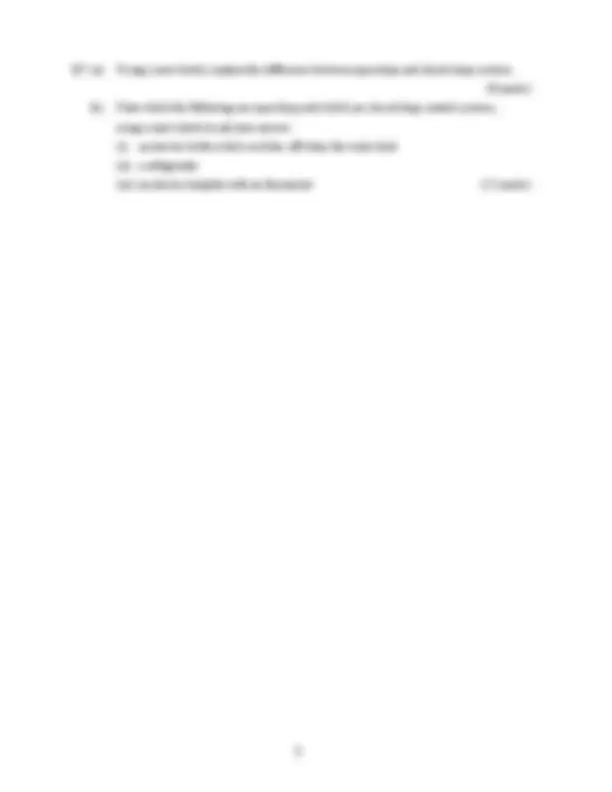



Study with the several resources on Docsity

Earn points by helping other students or get them with a premium plan


Prepare for your exams
Study with the several resources on Docsity

Earn points to download
Earn points by helping other students or get them with a premium plan
Community
Ask the community for help and clear up your study doubts
Discover the best universities in your country according to Docsity users
Free resources
Download our free guides on studying techniques, anxiety management strategies, and thesis advice from Docsity tutors
These are the Past Exam of Electrical which includes Passive Infrared Detector, Tamper Circuit, Security Alarm System, Alarm System, Consideration, Account During, Operation, Neat Sketch, Lightning Discharge etc.Key important points are: Protective Devices, Explain, Important Factors, Consideration, Fire Alarm System, Advantages, Addressable, Fire Alarm System, Measurement, Electrical Installation
Typology: Exams
1 / 3

This page cannot be seen from the preview
Don't miss anything!


Instructions Answer FIVE questions.
Examiners: Mr. S. Boljevic Mr. D. Leonard Dr. M. Smyth
Q1. (a) Outline and explain the most important factors taken into consideration in the designing of a fire alarm system. (7 marks) (b) Discuss the advantages of an addressable fire alarm system over a conventional fire alarm system. (6 marks) (c) In relation to fire alarm systems explain in detail the term ‘zoning’. (7 marks)
Q2. (a) With the aid of a neat sketch explain the measurement of specific earth resistance. (5 marks) (b) With the aid of a neat sketch explain measurement of earth electrode resistance. (5 marks) (c) State five tests that must be completed before an electrical installation is energised and with the aid of a neat sketch, explain (^) two of your choice. (10 marks)
Q3. (a) With the aid of a neat sketch, clearly explain the operation and application of a current transformer (CT). (10 marks) (b) With the aid of a neat sketch clearly explain the operation and application of a voltage transformer (VT). (10 marks)
Q4. (a) List and explain the tests with the aid of a neat sketch in recommended sequence which should be carried out on an three phase squirrel cage motor. (14 marks) (b) Outline and explain the method in sequential order to replace bearings in an three phase squirrel cage motor. (6 marks)
Q5. (a) State three types of overcurrent relays based on operating characteristics and with the aid of a neat sketch, explain the operation of each of them. (8 marks) (b) The diagram below shows protection arrangement for the motors up to 1000 Hp. List the protective devices involved, and explain the function of each protective device. (12 marks)
Figure Q5. Q6. (a) What is polar curve and how is it useful to a lighting design engineer? (4 marks) (b) Outline and explain the general principles that are usually employed in the design of street lighting. (6 marks) (c) Determine at what angle maximum luminous intensity occurs and state the illumination at 10 m directly beneath the lamp if the mounting height is 18 m and the supply polar curve is: (10 marks)
Angle in degree 110 100 90 80 70 50 40 30 20 10 0 Intensity in candelas
5k 6k 7k 8k 9.5k 8k 6k 5k 4k 3k 2.5k
Table Q